Greece is easily one of the world's best destinations. From historic sightseeing to glorious beaches, visitors truly are in for a treat.Most visitors begin their trip in Athens, where Classical Greece colours the modern capital through famous structures like the Parthenon and the Acropolis. Visitors will also find many wonderful museums. Syntagma Square is the city's social, political and commercial hub.From Athens, most tourists venture out to the islands. Mountainous Crete is the most popular and features sparkling beaches, spectacular green outcroppings, ancient Minoan sites, and the famous Samaria Gorge Trail. Other popular island destinations include Corfu, for its mythic significance, Santorini, for its volcanic history and vibrant nightlife, and Rhodes, which is a World Heritage Site.Many history buffs head to the Peloponnese Peninsula for the region's ancient ruins and battlefields.
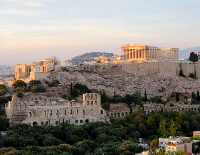
In Athens, first-time visitors generally flock to the Acropolis. Perched on a steep, flat-topped rock above the sprawling city, the citadel is a striking image of the ancient world. Essentially, it is a timeless collection of magnificent temples, most of which honour Athena, the goddess of wisdom.The Athenian statesman, Pericles, erected most of the present-day ruins after Persians destroyed the original buildings. Visitors enter through the Propylaea: the monumental entranceway. The tiny, restored temple of Athena Nike is to the entrance's right.All things considered, the Parthenon may be the Acropolis' biggest drawcard. Built of Pentelic marble quarried from the distant mountains, it's the greatest surviving monument of Doric architecture, and the backdrop to a magnificent view of Athens.The Erechtheion temple sits alongside the Parthenon. According to mythology, it is the site where Poseidon and Athena contested the right to be Athens' deity. Athena won after gifting Athens the olive tree.Lastly, the Acropolis' museum is located by the citadel's southern slope. It displays some of the carvings and friezes recovered from the temples.
Address : Dionysiou Areopagitou Street
Website : whc.unesco.org/en/list/404
Telephone : +30 210 9238747
Opening times : 8am-5pm
Admission : €20 for adults, under 18s free. Other concessions available.
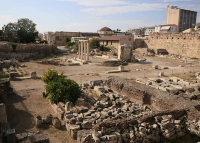
The remains of the Agora lie clustered below the Acropolis. As Ancient Athens' commercial and civic centre, it's where the great philosophers Socrates and Plato once walked and talked. In fact, the disgraced Socrates committed suicide in the Agora's southwest corner.Today, the area is littered with ancient ruins, including the Dionysos Theatre, where Classical Athens' great tragedians put on their work.Visitors can also see the restored Stoa of Attalos, which served as a law court, municipal office and shopping arcade in 200 BC. The museum on the building's ground floor contains artefacts covering 5,000 years of Athenian history.
Address : Adrianou 24, Athina 105 55
Website : www.agathe.gr/overview/the_archaeological_site.html
Telephone : +30 21 3210185
Opening times : Summer: 8.30am-7.30pm. Winter: 8am-3pm.
Admission : €8 for adults; €4 for those over 65.
The Benaki is one of Greece's most famous museums, where visitors can explore Greek culture through artefacts dating from antiquity to present times.Paleolithic and Neolithic relics, items from the late Roman Empire, and pieces left after centuries of Frankish and Ottoman occupation are all on display. Greece's struggle for independence in 1821, and the formation of the modern Greek state feature in the more recent content. Visitors should look out for the Museum of Islamic art, temporary exhibitions, as well as restoration and conservation workshops.The museum's library holds a very valuable and extensive collection on topics relating to its exhibitions. Visitors can't borrow books, though the library is open to the public for onsite use.
Address : 1 Koumbari St. 106 74 Athens
Website : www.benaki.gr
Telephone : +30 21 367 1000
Opening times : Wednesday and Friday 10am-6pm, Saturday and Thursday 10am-12am, Sunday 10am-4pm, closed Monday and Tuesday and for several holidays - check the website for details.
Admission : €9 (permanent collection), €7 (temporary exhibitions), free admission on Thursdays, concessions available.
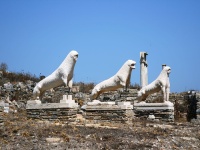
The island of Delos is a must for history buffs and lovers of Greek mythology. In fact, the UNESCO World Heritage site one of Greece's most important mythological, historical and archaeological locations.People have lived on Delos since the 3rd millennium BC, with the island serving as a sacred site for multiple religions, cults and sects over the centuries. It has also played a role in numerous historical events and been the subject of myths and prophecies.Archaeological excavations on Delos are extensive and ongoing, uncovering many valuable buildings and artefacts. Some of these are on display in the Archaeological Museum of Delos.Visitors should look out for the circular Sacred Lake, the Minoan Fountain, the Terrace of the Lions, and several impressive ancient buildings and temples. Travellers visiting Mykonos should definitely include a trip to Delos in their plans.
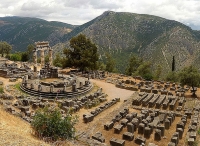
Situated on the slopes of Mount Parnassus, Delphi was home to Classical Greece's most important oracle. The country's ancient people visited the site to worship the god Apollo.Pilgrims came from all over the Classical Greek world to seek Apollo's advice via his oracle. The area also hosted the Pythian Games. Held every four years, they attracted famous athletes from all over the Ancient Greek world. They were one of the four Panhellenic games, which are considered precursors of the modern Olympics.Today, travellers hike up the Sacred Way much as ancient pilgrims did, and marvel at the site's fantastic ruins. They include the marble Sanctuary of Apollo, the Castalian Spring and the Sanctuary of Athena. Many visit the site's excellent museum.Scenically, Delphi is spectacular and presents enviable photographic opportunities. Given how extensive the site is, it's ideal to stay overnight.
Address : Delphi 330 54
Website : ancient-greece.org/archaeology/delphi-archaeology.html
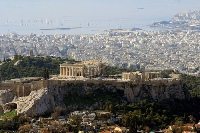
Lykavittos Hill juts a steep 984 feet (300m) right up from the centre of the city of Athens, and is a great vantage point from which to take in the scope of the city and its beautiful views. In fact, this is the best spot from which to view the city, in every direction, and a dreamy place to explore and take photographs. It is said that wolves once inhabited the hill, in explanation of how it got its name, because 'lykos' means wolf in Greek. Another popular myth explains that the hill was formed when Athena, the patron of Athens, dropped a rock she was planning to use for the Acropolis. The St. George Chapel and Lykavittos Theatre perch atop the hill, which can be reached by car, cable car or a healthy hike. There is a restaurant and cafe on the summit to refresh exhausted hikers or provide a romantic location for a dinner. The cable car departs every 30 minutes, from the corners of Aristippou and Ploutarchou Streets in Kolonaki. Those who plan to walk up - which is a really wonderful way to experience the hill - should begin their hike on Ploutarchou Street. After walking about half way up the hill hikers will come upon some steps that take them the rest of the way to the top.
Address : Mount Lykavittos, Athens 114 71
Website : www.athensinfoguide.com/wtslykavittos.htm
Opening times : The funicular runs Friday to Wednesday 8:45am till midnight, and Thursday 10:30am till midnight.

About 26 miles (42km) northeast of Athens, between the villages of Nea Makri and Marathona, is the site of the great battle between the small force of Athenians and the mighty Persian army in 490 BC. On the plain of Marathon today the burial mound of the 192 Athenians who fell in the fight can be seen, along with a small museum displaying archaeological relics from the battlefield. The battle is famed not only for the Athenian victory against huge odds, but also for the fleetness of the Athenian runner, Pheidippides, who was dispatched to Athens with news of the victory and fell dead from exhaustion after delivering the message to the city; thus the name 'Marathon' was given to long-distance running races. The marathon race in the 2004 Olympics started here, and followed the same route as that run by Pheidippedes in the legend, ending at the Panathinaikon Stadium in Athens, which was built for the first modern Olympic Games in 1896. Marathon remains one of the most famous battlefields in the world and a visit to the site is a must for anybody with an interest in military history.
Address : 114 Plataion Street
Website : www.athensmarathon.com/history/
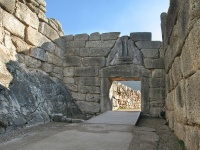
This ancient site, 31 miles (50km) south of Corinth, bears the remains of the ancient palace and citadel of Mycenae, a place of archaeological controversy but fascinating for the lay visitor. Homer's fabulous story has it that the kingdom of Mycenae was dripping in gold and revelling in riches before King Agamemnon decided to lead an assault on Troy, back in about 1,250 BC. The king started a war that lasted a decade, battling to win the impossibly beautiful Helen of Troy back from Prince Paris. German archaeologist Heinrich Schliemann discovered Mycenae, which he believed gave credence to Homer's tale, in 1874 after he had excavated the remains of Troy itself. There is no doubt that Mycenae was a city of power and prosperity and the ruins, from the Lion Gate (oldest example of monumental sculpture in Europe) to the palace complex, houses and beehive tomb of Agamemnon, are well worth exploring. Most of the more exceptional finds from the site are on exhibit in the National Archaeological Museum in Athens. These include frescoes, gold jewellery, and the gold mask said to have belonged to Agamemnon, among other priceless pieces.
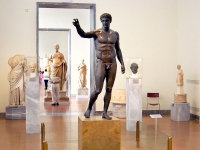
This is the largest and most popular of Athens' many museums, and is usually very crowded. Its vast collection includes treasures unearthed from Mycenae by Heinrich Schliemann; a staggering array of sculpture including the earliest known Greek figurines dating from around 2000 BC; frescoes from the volcanic island of Santorini; and so much more that it is recommended visitors make several visits to absorb it all. One of the most popular displays is the Mycenae gold, collected from ancient tombs, including Agamemnon's death mask. The museum is world-class and well-arranged and it hosts regular temporary exhibitions and educational programmes (lectures and workshops) for those interested. There is a gift shop and cafe for visitors to relax in if they get tired, which is often necessary as the museum can occupy one for hours and there is not much seating in the exhibition rooms. Photography is allowed in the museum and the glass display cases have been designed to make photography possible. There is a disabled entrance around the side of the building. By all accounts this is one of the most captivating and impressive museums in the world and it is a must on any visit to Athens.
Address : Patission 44 Street
Website : www.namuseum.gr
Telephone : +30 213 214 4800
Opening times : Monday 1pm to 8pm. Tuesday to Sunday 9am to 4pm. Closed on some national holidays.
Admission : €15 (adults); €8 (concessions). From November to March, Sundays are free.
Among shady pine, olive and oak trees, in a valley between Mount Kronos and the Alfios River on the Peloponnese Peninsula, lies one of the most famous historical and archaeological sites in Greece. Olympia includes the remains of two ancient temples and the stadium where the first Olympic Games took place in 776 BC. Since the modern Olympics were inaugurated in 1896 torchbearers have set out from Olympia to carry the Olympic flame in relays across the world to wherever the games are held every four years. The site also boasts one of the finest archaeological museums in Greece. The ruins themselves are fascinating, being the remnants of an ancient Olympic village including a gymnasium, baths, the Prytaneion - where winners were honoured - and a Doric Temple dedicated to Hera. In the nearby modern village of Olympia there is another museum that is often sadly overlooked: the Museum of the Olympic Games contains some interesting memorabilia from games past and gives those interested in the event a fantastic overview of its history and significance.
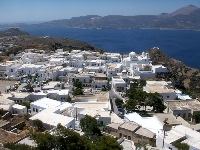
Plaka is the old historical neighbourhood of Athens, clustered around the northern and eastern slopes of the Acropolis, and incorporating labyrinthine streets and neoclassical architecture. Modern Plaka has been built on top of the residential areas of the ancient town of Athens and it is known as the 'Neighbourhood of the Gods' because of its proximity to the Acropolis and its many archaeological sites. The old town is a very popular gathering place for travellers and tourists, particularly in the warm Athens evenings. Strolling the narrow streets of the Plaka flanked by ancient monuments, Byzantine churches and mosques, stately mansions, and inviting tavernas with vine-covered courtyards, makes a pleasant diversion. The Ancient Agora is a central feature of this area and the modern Plaka was built around it. Archaeological excavations have been taking place here continuously for decades and new ruins and artefacts are still being found. No cars are allowed in Plaka, which is completely pedestrianised. There is some great shopping to be done in the area but on busy days beware of pick-pockets who target market places and tourists. A visit to Athens is not complete without a long supper beneath the stars in Plaka.
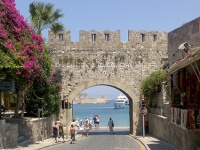
With buildings and monuments dating back hundreds of years, Old Town offers a wealth of historic attractions and has been declared a UNESCO World Heritage Site. The medieval streets feature Gothic windows and paved courtyards lit by traditional street lamps. The most famous of these is the Street of Knights (or Knights Avenue) which leads to the Palace of the Prince Grand Master. This palace displays several artefacts from as far back as the 13th century, when the crusades first came to Rhodes. The shops and stalls of Socrates Street are worth browsing for local jewellery, pottery and clothes. Although there are many gates through which to enter the Old Town, one of the best starting points is Eleftheria (Liberty) Gate, where you'll come to Simi Square which contains the ruins of the Temple of Venus, thought to date from the 3rd century BC. Getting lost in the Rhodes Old Town is almost obligatory: there are about 200 streets and they don't even have names so it can get confusing. Getting lost here is rather wonderful but when you need to find yourself again ask for Socrates Street, which is the 'main' street of the area. The Old Town is completely pedestrianised.
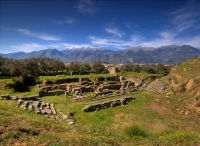
Made popular again by the 2006 film 300, the ancient city of Sparta sits in the middle of the Plains of Laconia in the Peloponnese, which is one of the most historic regions in the world. Sparta emerged as a political entity around the 10th century BC and by 650 BC was rising to be a dominant military power in ancient Greece. It was recognised as the leader of the Greek forces in the Greco-Persian Wars, from which Greece eventually emerged victorious but at great cost to Sparta, and many other city-states. By 146 BC Sparta had lost its independence to Roman conquest. The Spartans were fiercely militaristic and their whole way of life was centred around military training and prowess. The Spartans were a legendary military force, and are still referenced in military strategy. At the archaeological site visitors can view the excavations and ruins and visit the tomb of King Leonidas, the sanctuary of Artemis Orthia, and the Sparta Archaeological Museum in town, as well as view a number of ruins and ancient churches in nearby Mystras. The famous battlefield of Thermopylae can also still be visited and there are several monuments there to the Spartan force that was wiped out after extreme feats of prowess and bravery, including a monument to King Leonidas.
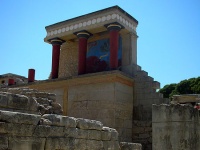
The Minoan palace at Knossos, covering an area of 215,278 square feet (20,000 sq metres), is one of the world's greatest sightseeing experiences and a must for visitors in the area. It consists of four wings, arranged around a rectangular, central court. The palace originally had many storeys, was built of ashlar blocks, and had walls decorated with splendid frescoes. British archaeologist, Arthur Evans, who excavated most of the labyrinthine Knossos site, has painstakingly restored some sections of the palace. The remains now visible are actually not those of the original palace, which was built around 2,000 BC and destroyed by an earthquake about 1,700 BC. A subsequent, more complex, palace was then constructed and it is these ruins which can still be seen and parts of which have been restored. The palace was first unearthed in 1878 by a Cretan merchant and antiquarian, but was not systematically excavated until 1900. The Knossos site is about three miles (5km) south of Heraklion.
Address : Knossos, 714 09
Website : www.ancient-greece.org/archaeology/knossos.html

The city of Thessaloniki's most famous landmark, the White Tower, was originally built as part of the city walls to fortify the coast during Ottoman rule. It now stands, no longer quite white but still very imposing, on the seaside promenade south of the Archaeological Museum, having been restored and offering panoramic views of the city and harbour from its rooftop café. Although now a proud landmark of the city, and the chosen symbol of its residents, the tower has a bloody history. It was used by the Ottomans as a prison, infamous for its brutality, and was the site for public executions; on the way up the winding staircase to the cafe visitors can peep into the dim rooms that were once used as cells. As a result of this notoriety as a brutal place it was known as the 'Tower of Blood' or the 'Red Tower' to local Greeks up until the end of the 19th century. When Thessaloniki was reclaimed by the Greeks the tower was whitewashed as a gesture of symbolic cleansing and it has since been re-imagined in the collective imagination as a positive symbol of freedom and pride. The tower contains a museum housing some Byzantine art and historical artefacts from Thessaloniki's history between 300 and 1,500 AD.
Address : Thessaloniki 546 21
Website : www.inthessaloniki.com/en/white-tower-museum

Vergina, known in ancient times as Aigai, is the most important of a cluster of three archaeological sites in the area connected with Philip, father of Alexander the Great. Vergina is where Philip built a massive palace and a theatre, and where he was assassinated in 336 BC. The palace has been excavated, as has the theatre, and the site also features hundreds of burial mounds, some dating from the Iron Age, across the plain. The tomb of Philip was found here undisturbed in 1977, full of treasures that are now on display in Thessaloniki's Archaeological Museum. The vast palace is full of amazing mosaics and paintings and is really exciting to explore, as are the tombs, which are surrounded by a museum and can be seen in all their ancient splendour. The site of ancient Aigai has been declared a UNESCO World Heritage Site and is a privilege to explore for those with an interest in ancient history and archaeology. Nearby is Pella, the remains of the former capital of Macedonia from the 5th century, where Alexander the Great was born; and Dion, an important religious sanctuary once frequented by Philip and Alexander.
Address : 38 miles (61km) west of Thessaloniki
Website : www.visitgreece.gr/en/culture/archaeological_sites/vergina

Travel Guide powered by Word Travels, copyright © 2023 Globe Media Ltd. By its very nature information in this travel guide is subject to change at short notice and travellers are urged to verify information on which they're relying with the relevant authorities. Neither Globe Media Ltd nor Travel Vogue can accept any responsibility for any loss or inconvenience to any person as a result of information contained above.